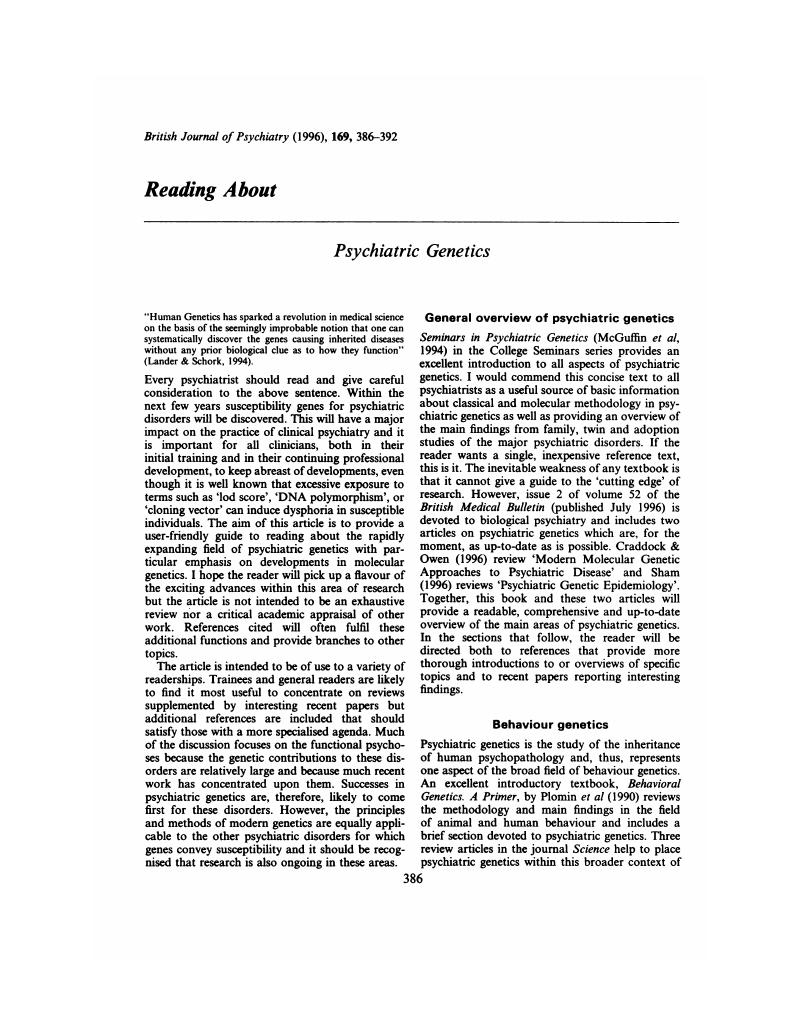Crossref Citations
This article has been cited by the following publications. This list is generated based on data provided by Crossref.
Craddock, Nick
Spurlock, Gillian
Mcguffin, Peter
Owen, Michael J.
Nosten-Bertrand, Marika
Bellivier, Frank
Meloni, Rolando
Leboyer, Marion
Mallet, Jacques
Mynett-Johnson, Lesley
Murphy, Valerie
Mckeon, Patrick
Kirov, George
Powell, John
Kunugi, Hiroshi
Collier, David
Larosa, Monica
Nacmias, Benedetta
Sorbi, Sandro
Schwab, Sibylle
Ackenheil, Manfred
and
Maier, Wolfgang
1997.
No association between bipolar disorder and alleles at a functional polymorphism in the COMT gene.
British Journal of Psychiatry,
Vol. 170,
Issue. 6,
p.
526.
Craddock, Nick
2006.
Encyclopedia of Life Sciences.




eLetters
No eLetters have been published for this article.